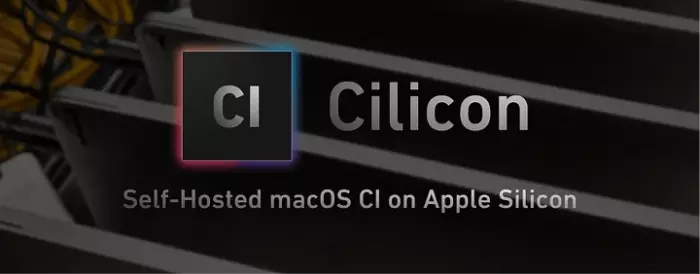Astronomers debate whether we have already found exomoons or not yet

Do exoplanets have exomoons? It would be surprising if this were not the case, but as with all things, we won’t be sure until we know for sure. A few years ago, astronomers thought they had discovered exomoons around two exoplanets: Kepler-1625b and Kepler-1708b. Is it so?
In 2017, researchers found evidence existence of moons around Kepler-1625b and Kepler-1708b. It was an exciting result, although the researchers cautioned that their findings were inconclusive. They hoped that Hubble would be able to confirm the presence of exosatellites. “Finally, we report evidence for the exomoon candidate Kepler-1625b I, which we briefly describe ahead of planned observations of the object with the Hubble Space Telescope,” the authors write.
More recently, René Heller and Michael Hippke wrote in Nature Astronomy that the data Tichy and others relied on did not prove the existence of exomoons. “The likelihood of a satellite in orbit for Kepler-1708b is clearly lower than previously reported,” said study co-author Michael Hippke of Sonneberg Observatory. “The data obtained do not indicate the existence of an exo-satellite around Kepler-1708b,” he added. Heller and Hippke said the same about Kepler-1625b.
Now a team of researchers, including two of the authors of the original 2017 study that revealed the exomoon, David Kipping and Alex Teachey, have responded to Heller and Hippke.
“Recently, Heller and Hippke stated that the exomoon candidates Kepler-1625 bi and Kepler-1708 bi have been allegedly ‘disproved,'” writes Kipping and Tichy. They argue that Heller and Hippke discarded too much useful data by excluding the exosatellite signal in light curves Hubble for Kepler-1625 bi. Their answer is contained in a paper, Matters Arising, currently under review in Nature Astronomy.
Exosatellites are extremely difficult to detect. The only evidence is the light curves. The two exoplanets in question, Kepler-1625 b and Kepler-1708b, are located 8,200 and 5,500 light years away, respectively. We often talk about galaxies that are several billion light years away from us, these two exoplanets are at a huge distance when it comes to planets. It’s easy to forget this – as well as how difficult they are to observe.

Kepler found a pair of exoplanets in this work using the transit method. The transit method measures the dip in a star’s light caused by a planet passing in front of its star. The transit produces a light curve that astronomers analyze for the presence of a planet. An exo-satellite around a planet discovered by the transit method creates its own gap in light – a subtransit, if you will.
But these features of the light curve are difficult to notice in the data obtained. Finding them requires detailed analysis. Exomoon light curves are much fainter than exoplanet light curves. Because they are so weak, noise in the signal can obscure them or even give false signals. Only structured analysis can reveal these faint exomoon light curves, and this kind of data can be analyzed in a variety of ways. Different researchers use different methods, models, and algorithms to analyze data, and sometimes even exclude data that other researchers maintain. So it’s not that simple.
In this case, Kipping and Tichy argue that Heller and Hippke made errors in their analysis and also excluded important information. “We show that their Hubble light curve has ~20% higher noise and discards 11% of the useful data, compromising its ability to recover the subtle signal of Kepler-1625 bi,” Kipping and Tichy write.
Something similar happened with Kepler-1708 bi. Kipping and Tichy write that Heller and Hippke mishandled some of the data, especially the choices they made in detrending. Detrending is the removal of trends from data in order to identify cyclical and other patterns in it. Heller and Hippke’s analysis and detrending indicated the absence of an exomoon around Kepler-1708 bi. But when Kipping and Tichy analyzed Heller and Hippke’s work, they said they were able to “…recover the original satellite signal with even greater confidence than before.”
Kipping and Teachey emphasize: “We begin by first stating clearly that both exomoon candidates may be fictions. Our initial and subsequent assertions are modest: these objects are candidates for which the data show substantial, but not entirely conclusive, evidence for existence exo-satellites.”
Kepler-1708b.
Kipping and Tichy say Heller and Hippke’s analysis is flawed. For Kepler-1708 bi, the light curve still shows the potential for an exomoon, shown in all panels below with a dotted line.

In their 2023 paper refuting the exomoon explanation, Heller and Hippke wrote: “The putative exomoon transit signal is not distinguishable from other sources of light curve variations that are likely to be of stellar or systematic origin.” However, Kipping and Tichy’s work shows that the curve is still present in the data.
Kepler-1625 bi
Kipping and Teachey also disagree with Heller and Hippke’s analysis of Kepler-1625bi. Kipping and Teachey again argue that other researchers made mistakes in their analysis. First, Heller and Hippke removed the first exposure in each orbit. This means that the amount of valuable data has decreased by 11%. K and T explain that removing so much data prevents such a weak exomusic signal from being detected.
K and T also note that Heller and Hippke did not provide important data when requested, even via email. This may be a warning sign, or it may have a simple explanation. However, reluctance to share important data with other researchers is not a good thing. “The authors also do not provide a description of their reduction of the Hubble data, a troubling omission given the notoriously large number of variations required to interpret an instrument with such strong systematics,” K and T write.

“Heller and Hippke concluded that the exomon candidates Kepler-1625 bi and Kepler-1708 bi are unlikely, but we have shown that their arguments are fundamentally flawed, stemming from multiple variations and interpretations that do not stand up to scrutiny,” write Kipping and Teachey.
If Heller and Hippke do not answer this question, Kipping and Tichy will have the last word. “We conclude that the existence of both candidates has not been disproved, but the data certainly warrant further observation.”





